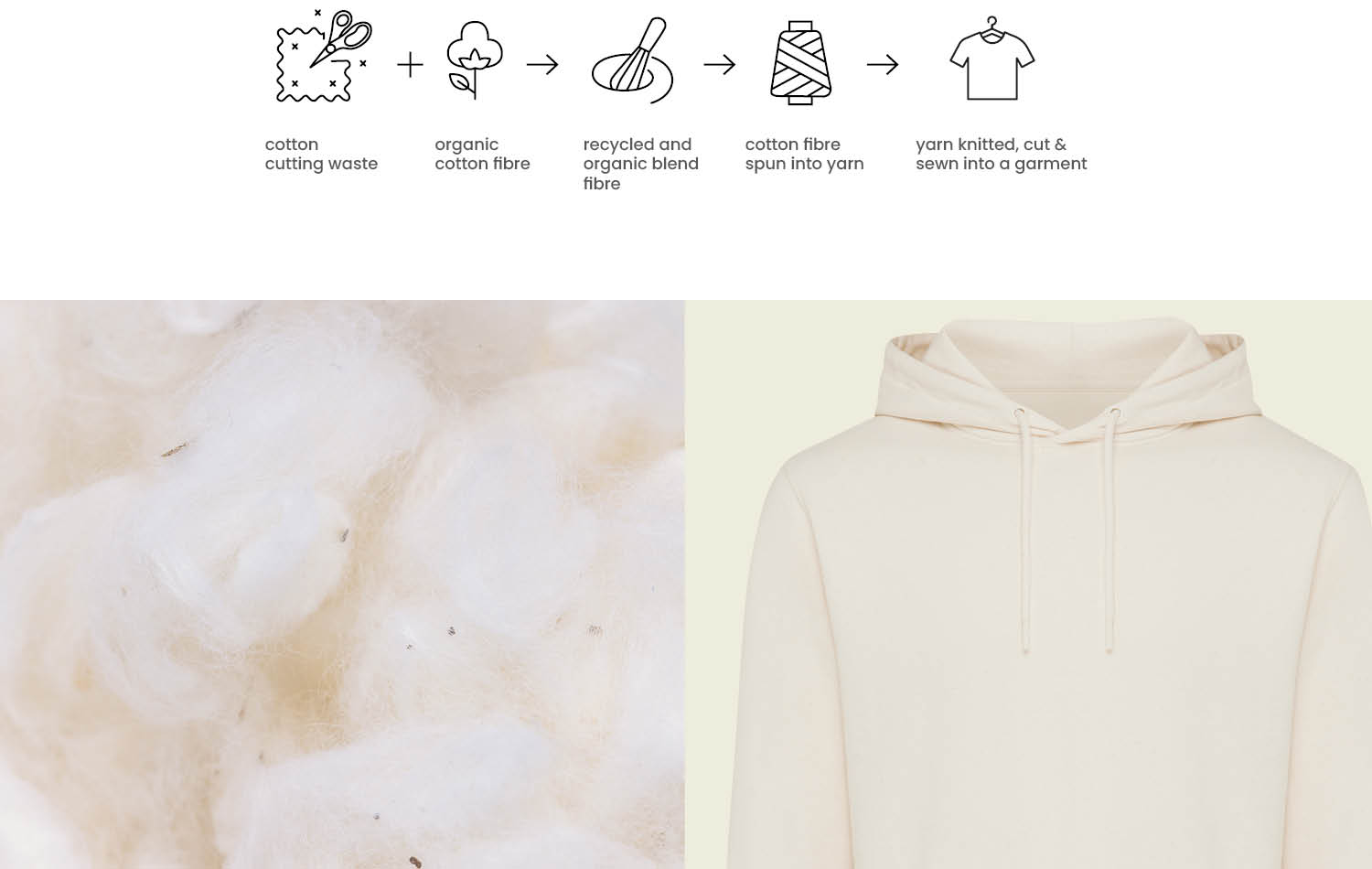Cotton, the cornerstone of the textile world, holds a paradoxical role as both beloved fabric and prolific waste generator. Europe alone discards a staggering 4 million tonnes of clothing annually, fuelling a global waste crisis. In countries like Bangladesh and India, textile production waste soars to even greater heights.
In a bid to minimize our environmental footprint and combat waste, iqoniq has taken a bold step towards integrating recycled cotton into our production process, creating premium garments while drastically reducing our reliance on virgin materials. Our commitment focuses on pre-consumer cotton waste, using discarded textiles from production, such as cut-offs, rejected fabrics, and unused cotton components.
Recognizing that the length of recycled cotton fibres does not produce strong enough fabric, we adopted an innovative approach. Our blends consist of 100% cotton, strategically combining recycled and virgin organic fibres to optimize fabric strength, extend the product lifecycle, and deliver that irresistibly soft handfeel.
Enter organic cotton, the embodiment of ethical and eco-responsible textile practices that underscore our clothing designs. Its cultivation pivots on ecological principles, swapping chemical fertilizers and pesticides for natural compost, safeguarding both farmers’ well-being and the purity of field waters.
But it doesn’t stop there; genetic modification is a strict no-go in the organic cotton realm, preserving ecosystems, nurturing biodiversity, and championing environmental equilibrium in the vicinity of cotton fields.
In iqoniq’s collection, the choice is clear – we have integrated organic cotton into our material blends, elevating fabric quality and enhancing that irresistible soft touch.

Our recycled cotton is made from cutting waste supplied from local markets close by to where our factories are located. This waste is collected from different factories, different fabrics, different productions.
Cutting waste is separated by colour and then manually cleaned from any foreign materials. However, some impurities may still remain inside the waste and may show up in limited extend later on in the final fabric appearance. For example a bit darker or a bit thicker yarn. These impurities enhance the nature of the recycled product and should be seen as an asset, not as a defect.
The final shade of recycled cotton fabric depends on the initial colour assortments of the waste.
Especially our undyed heather colours and the natural raw colour are made with completely water free processes, and therefore may have some slight colour variations between different pieces.
We believe that both, impurities and colour shading, prove the true story of our recycled process.